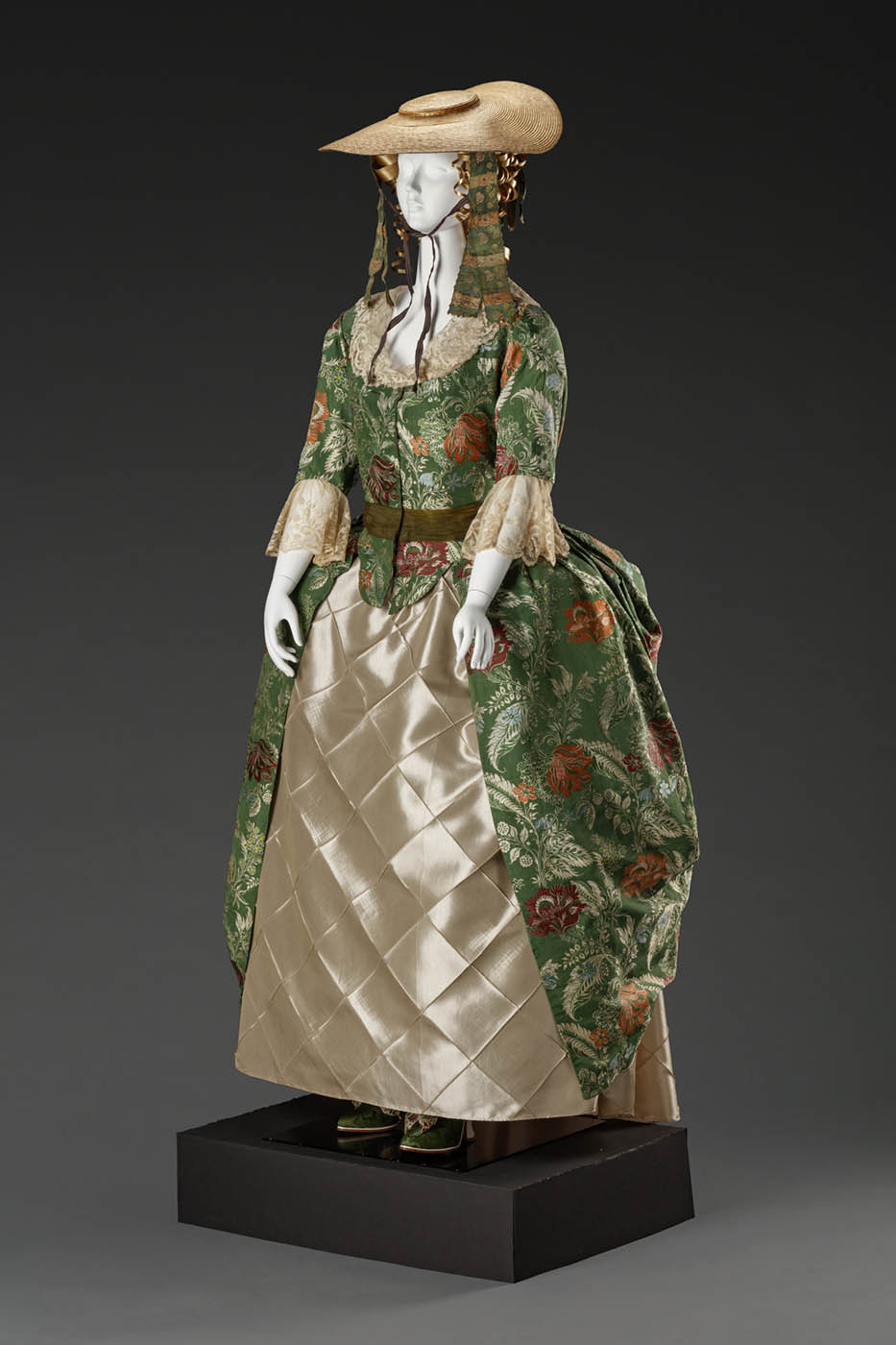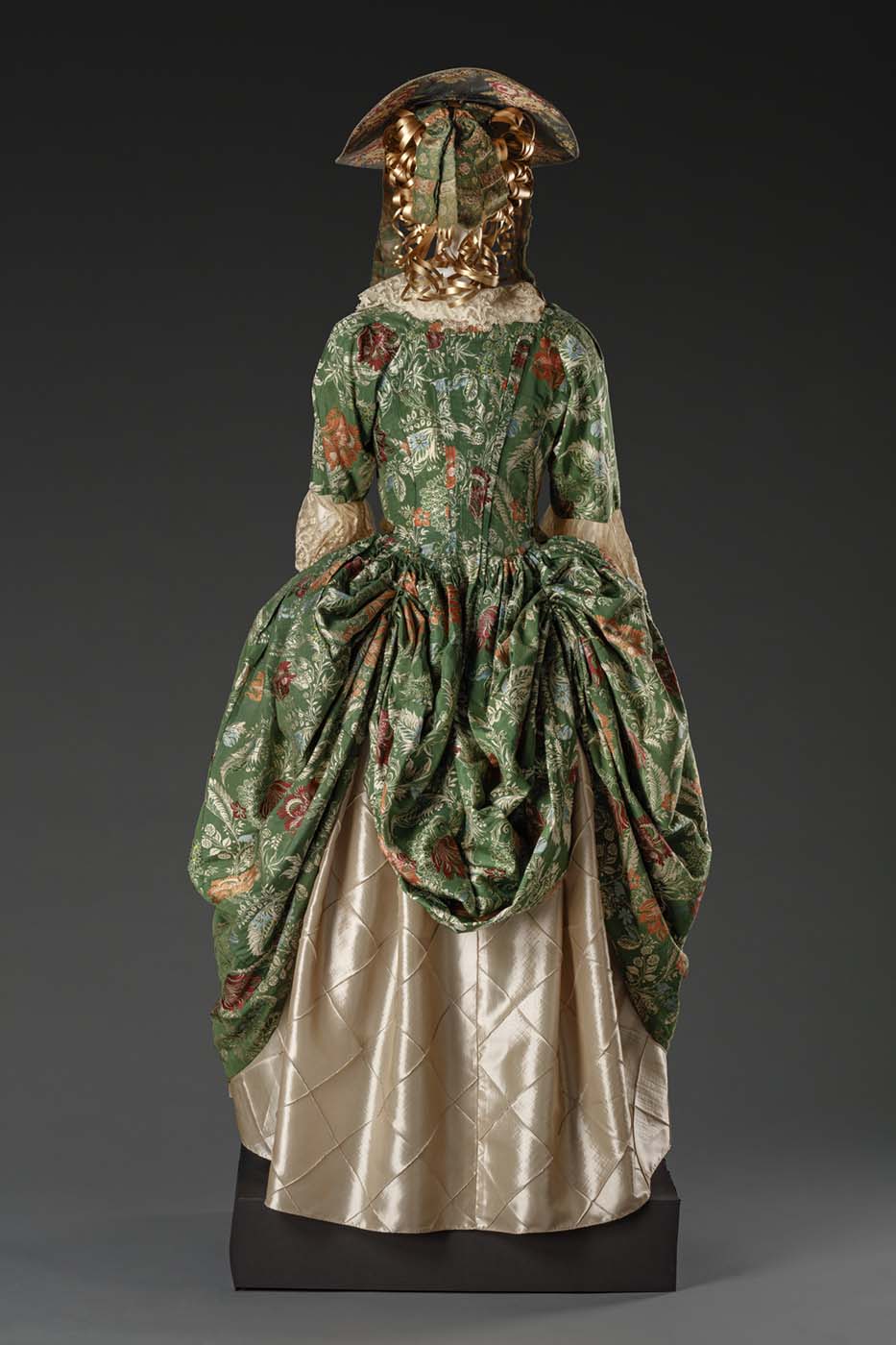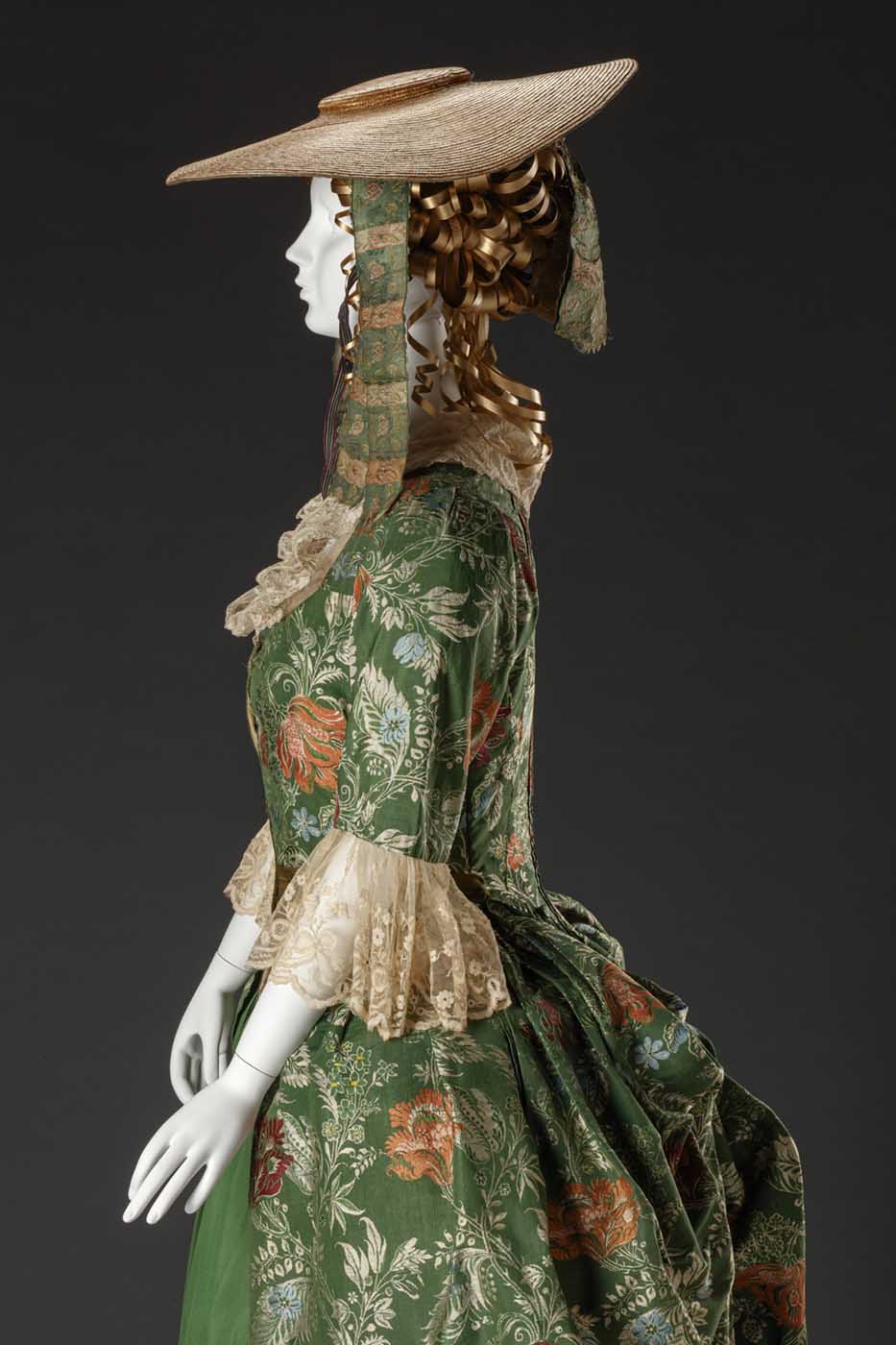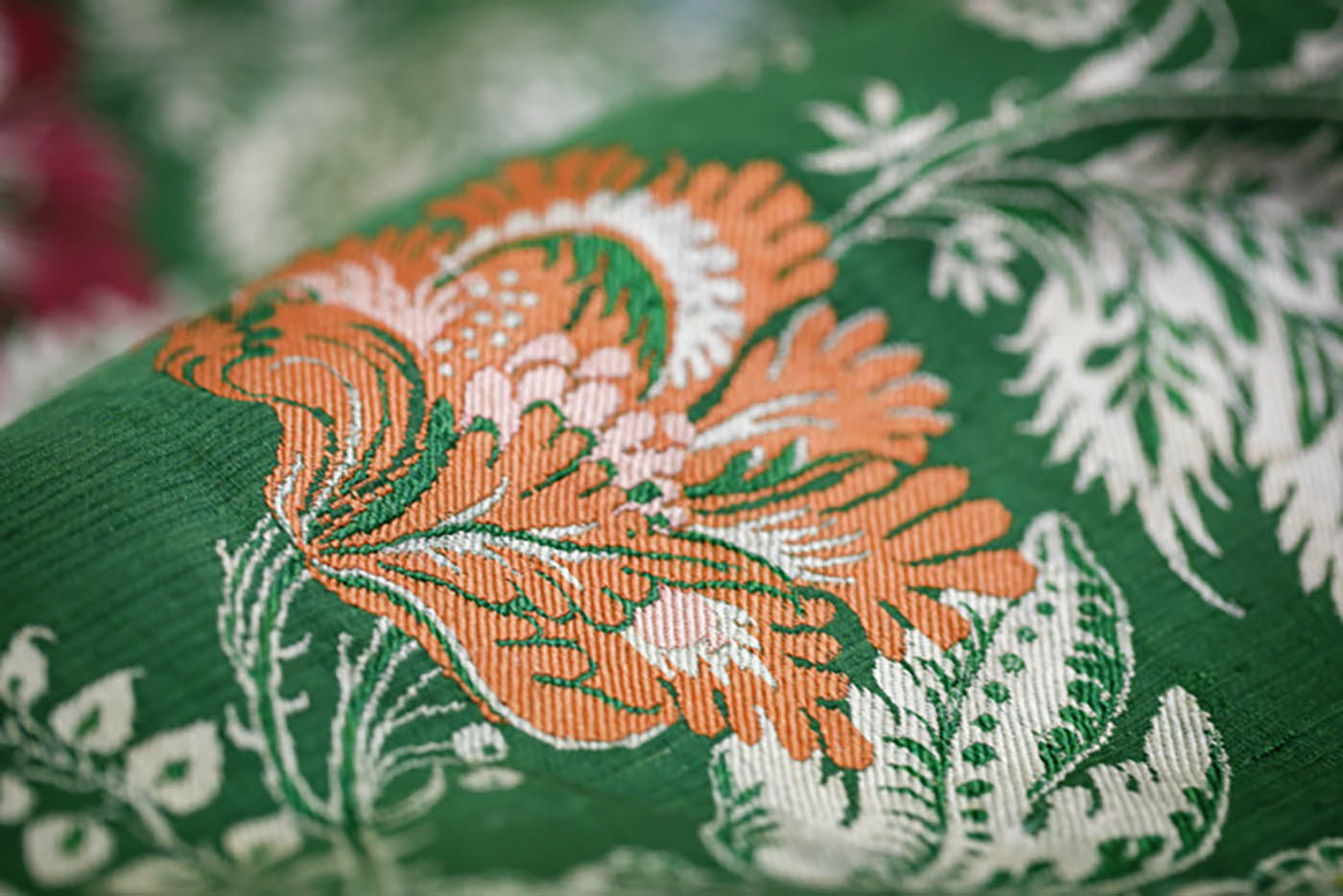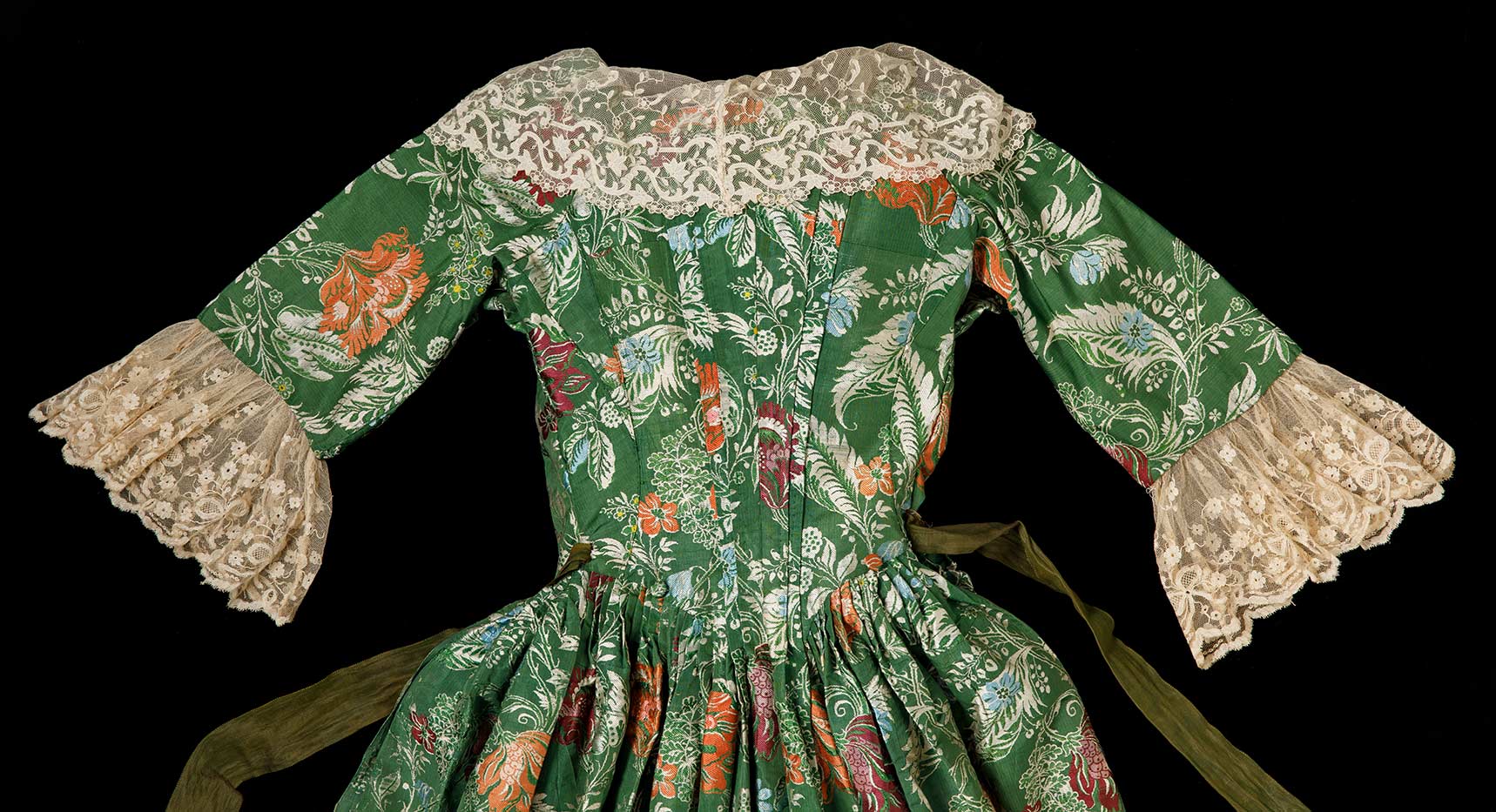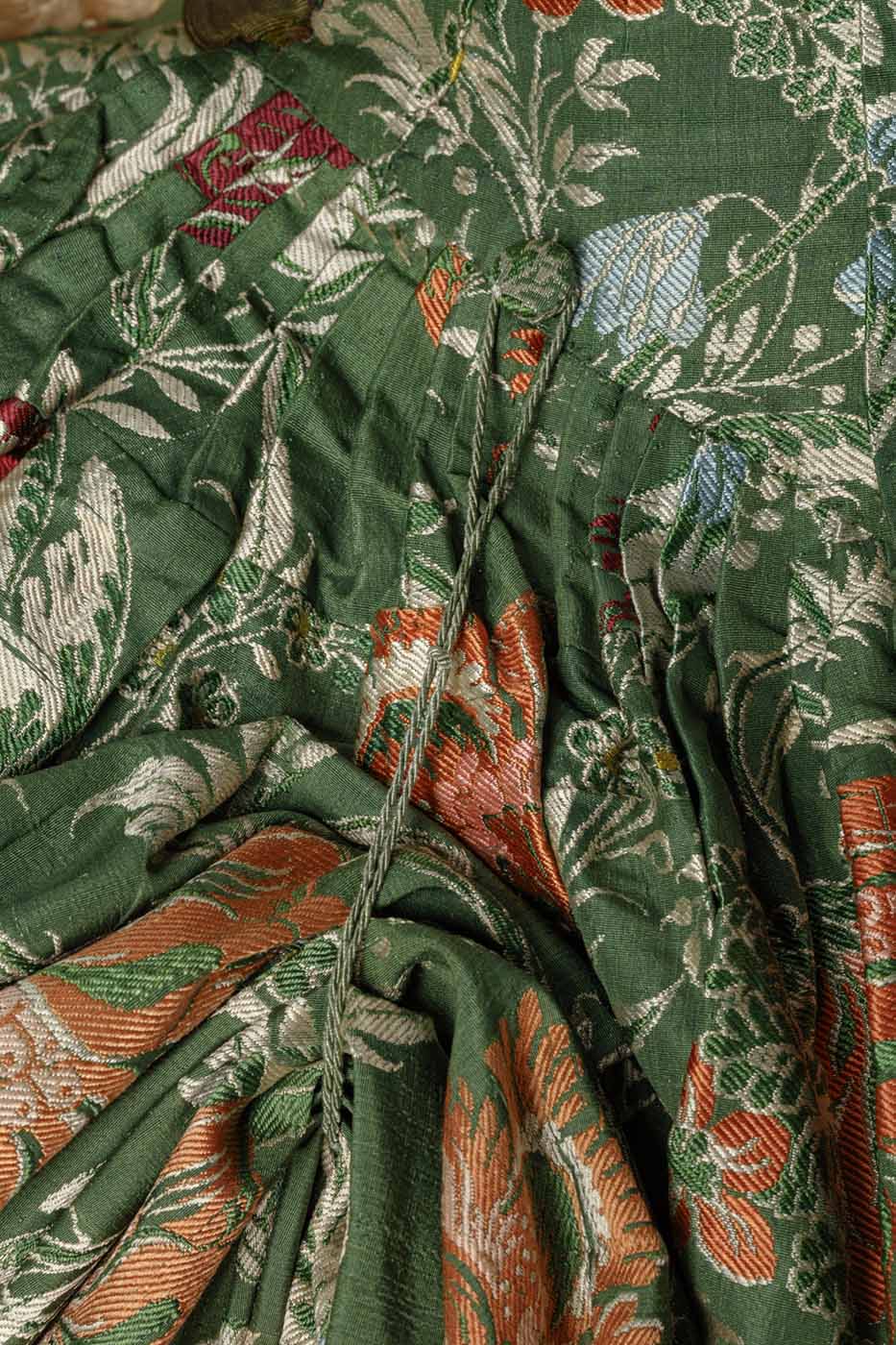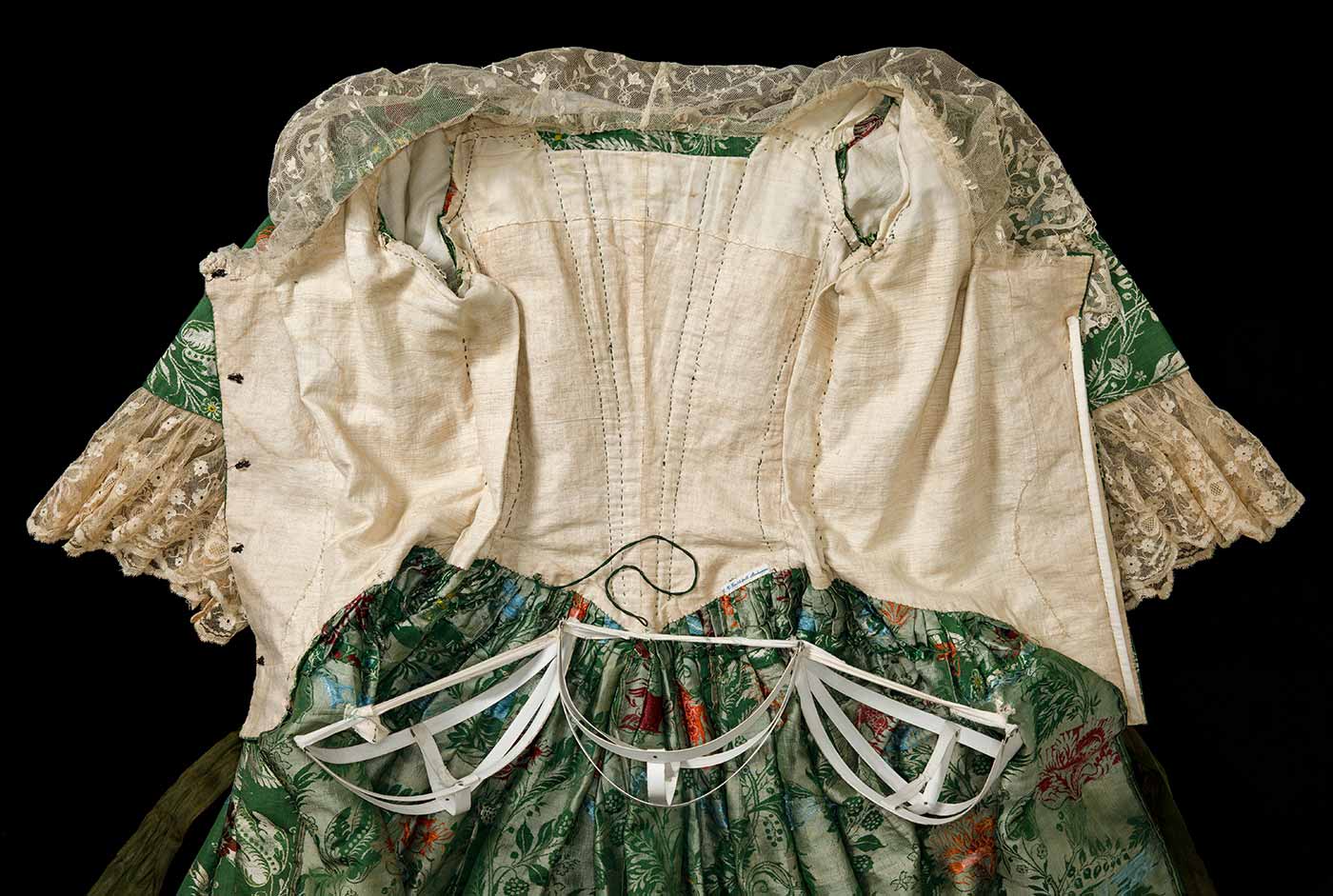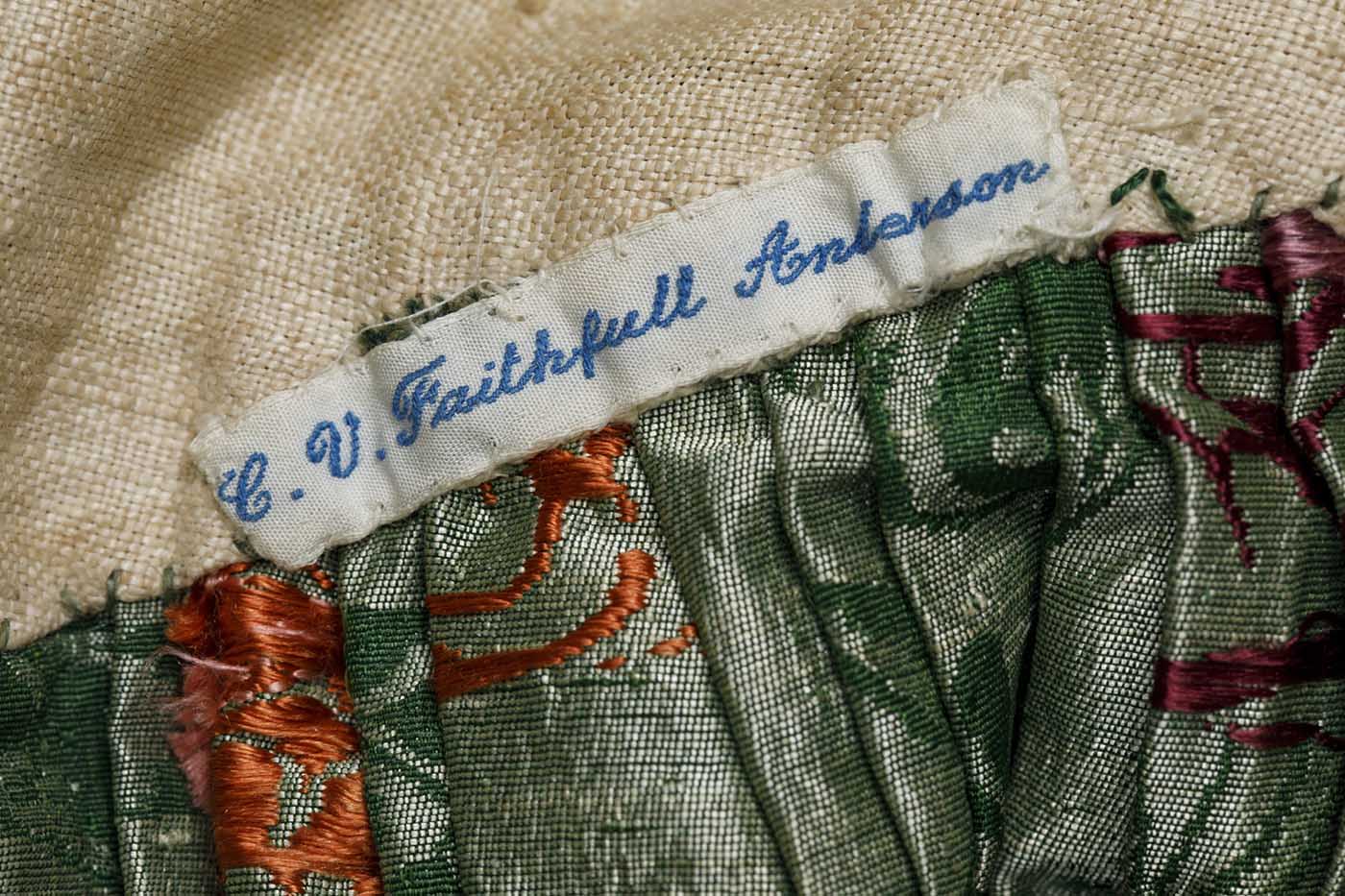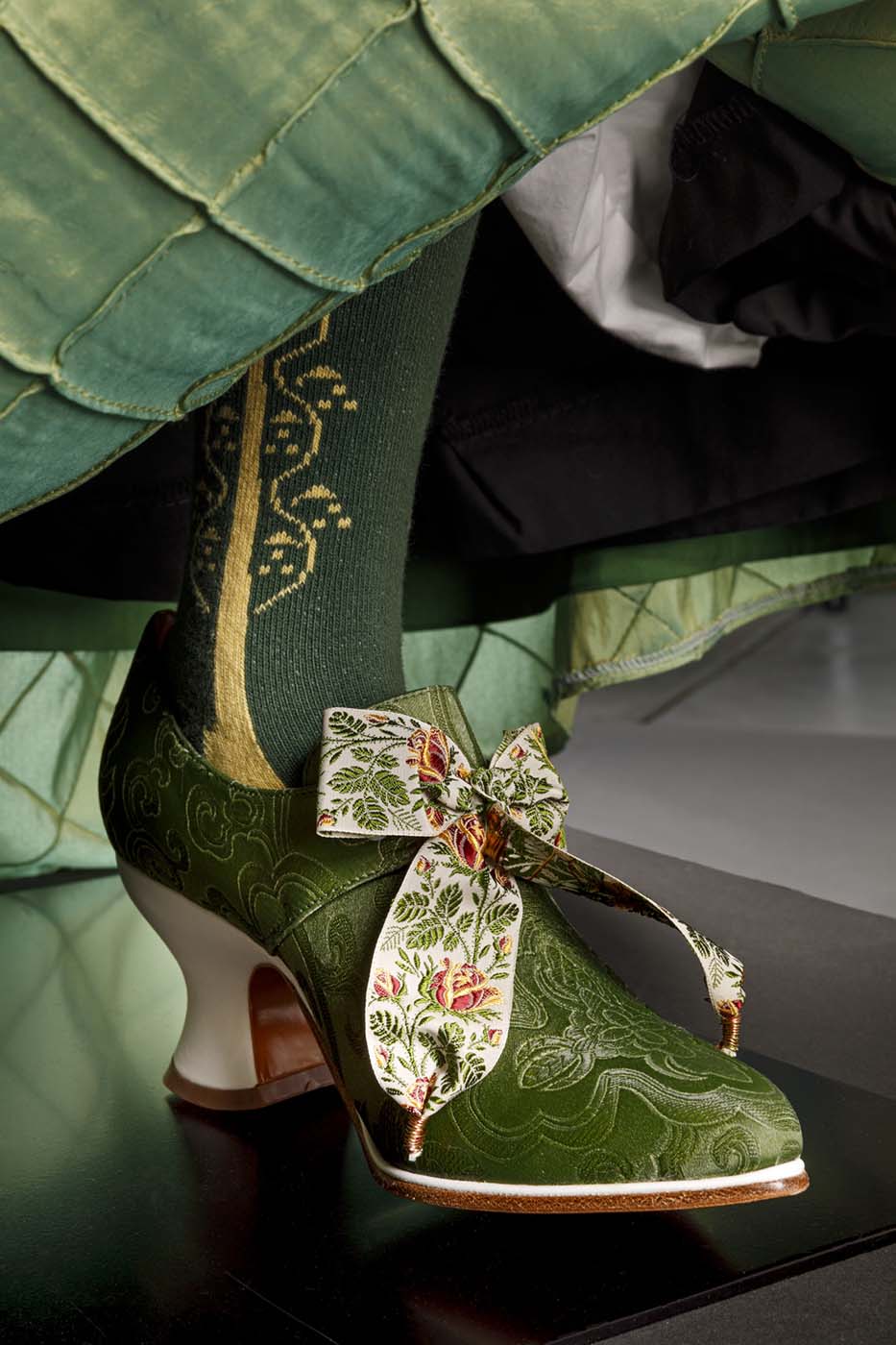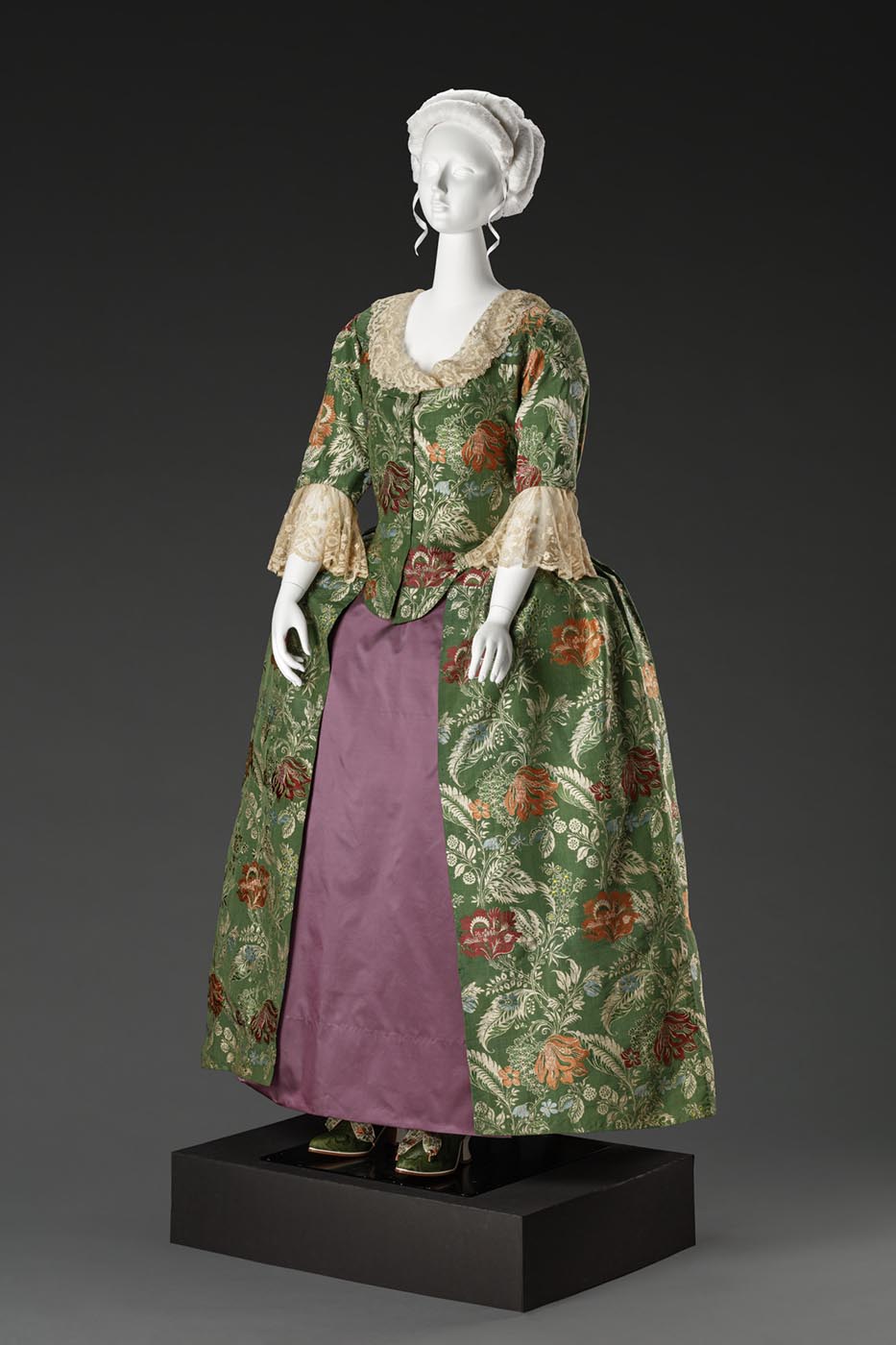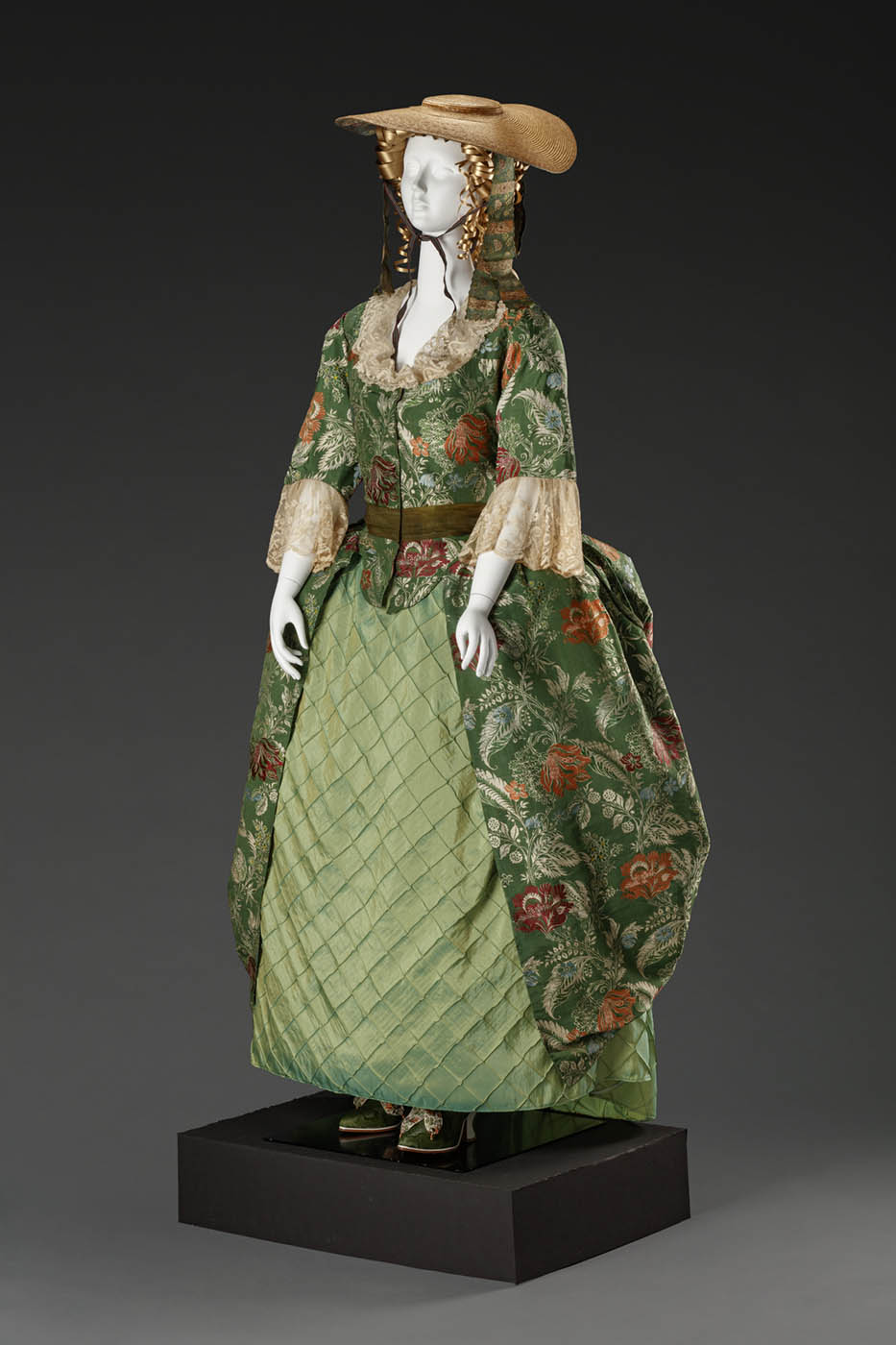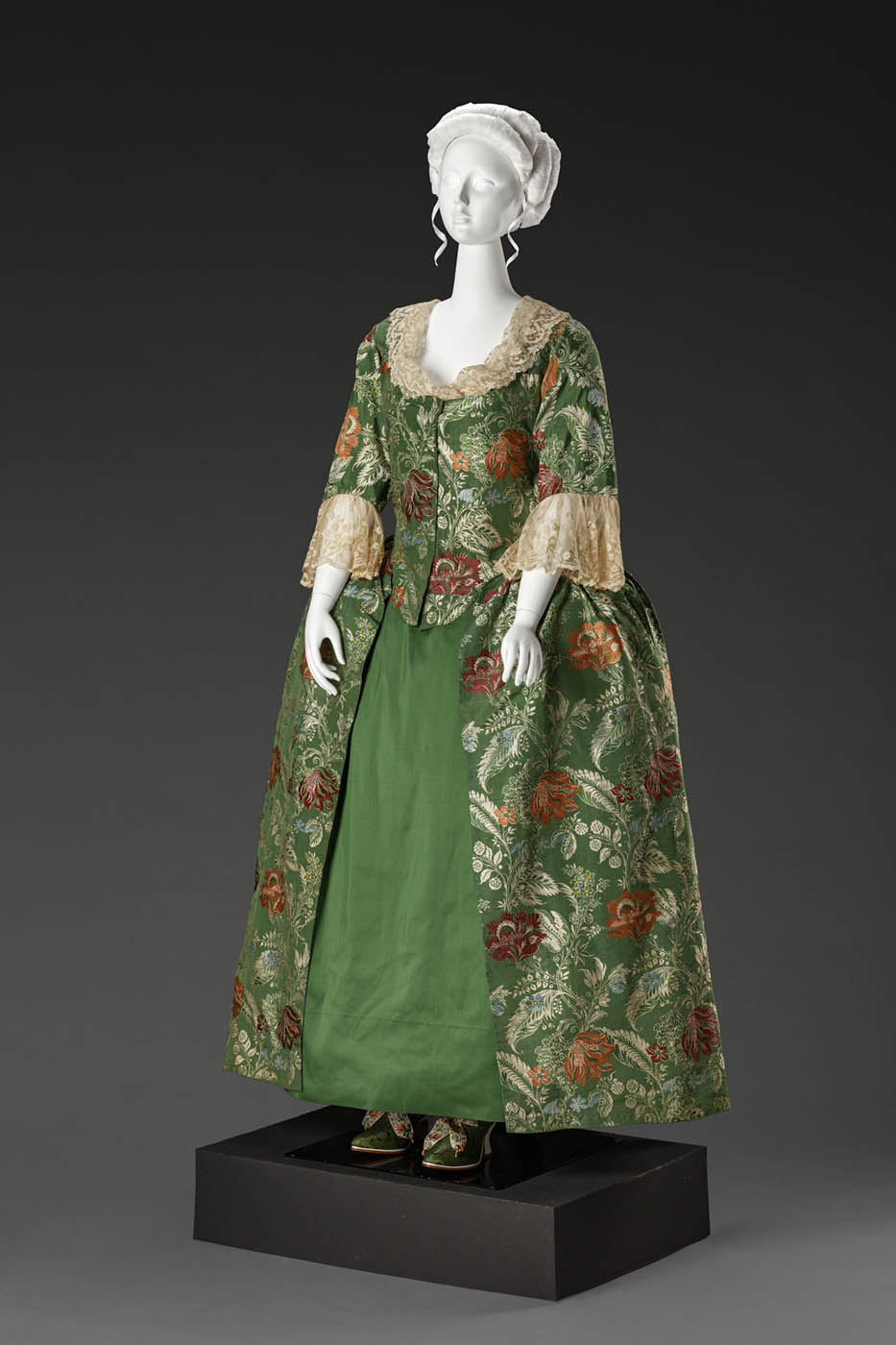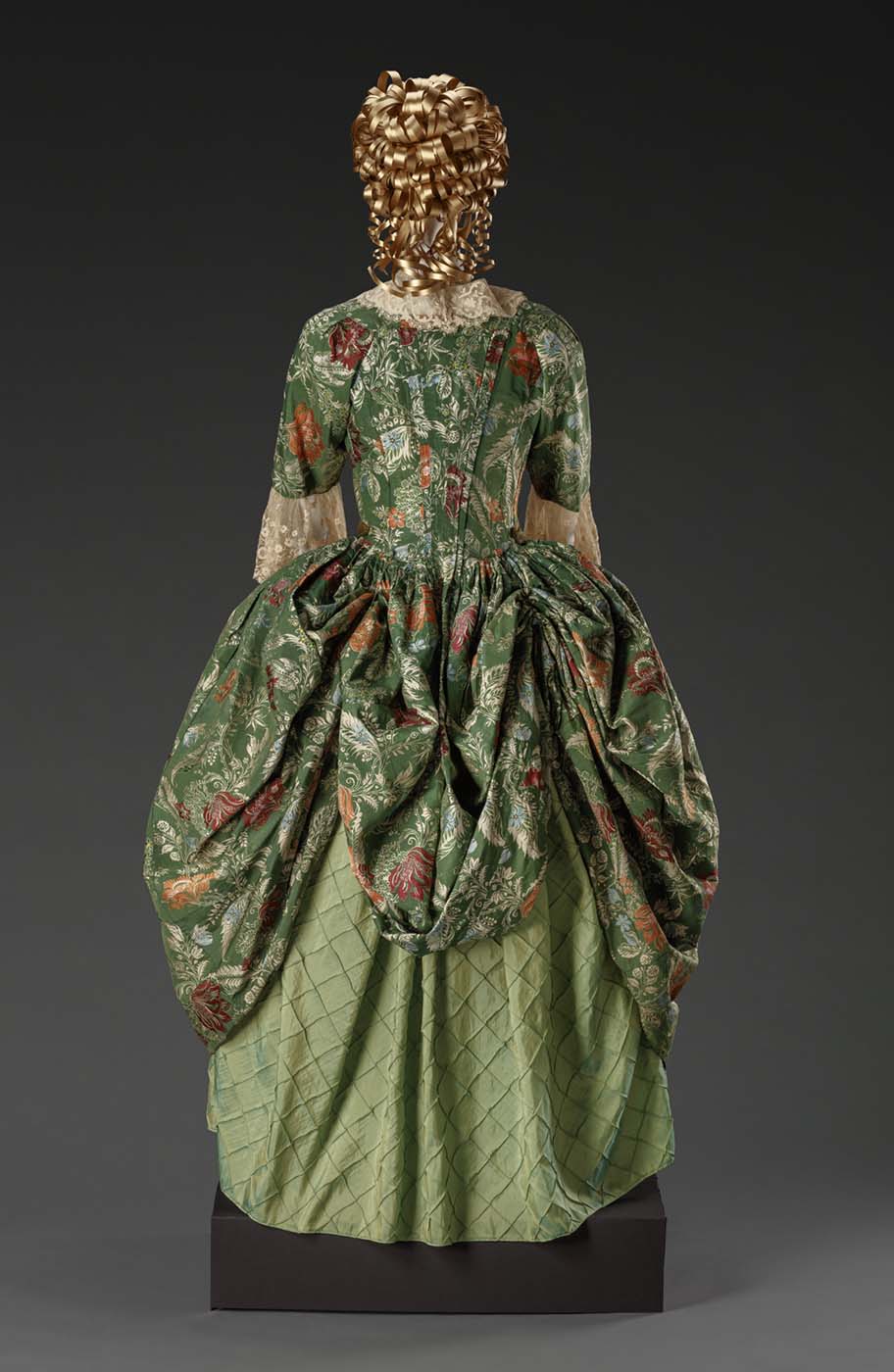This magnificent 18th century silk brocade dress was treasured by one family for almost 300 years. It is the oldest dress in the National Museum of Australia’s collection.
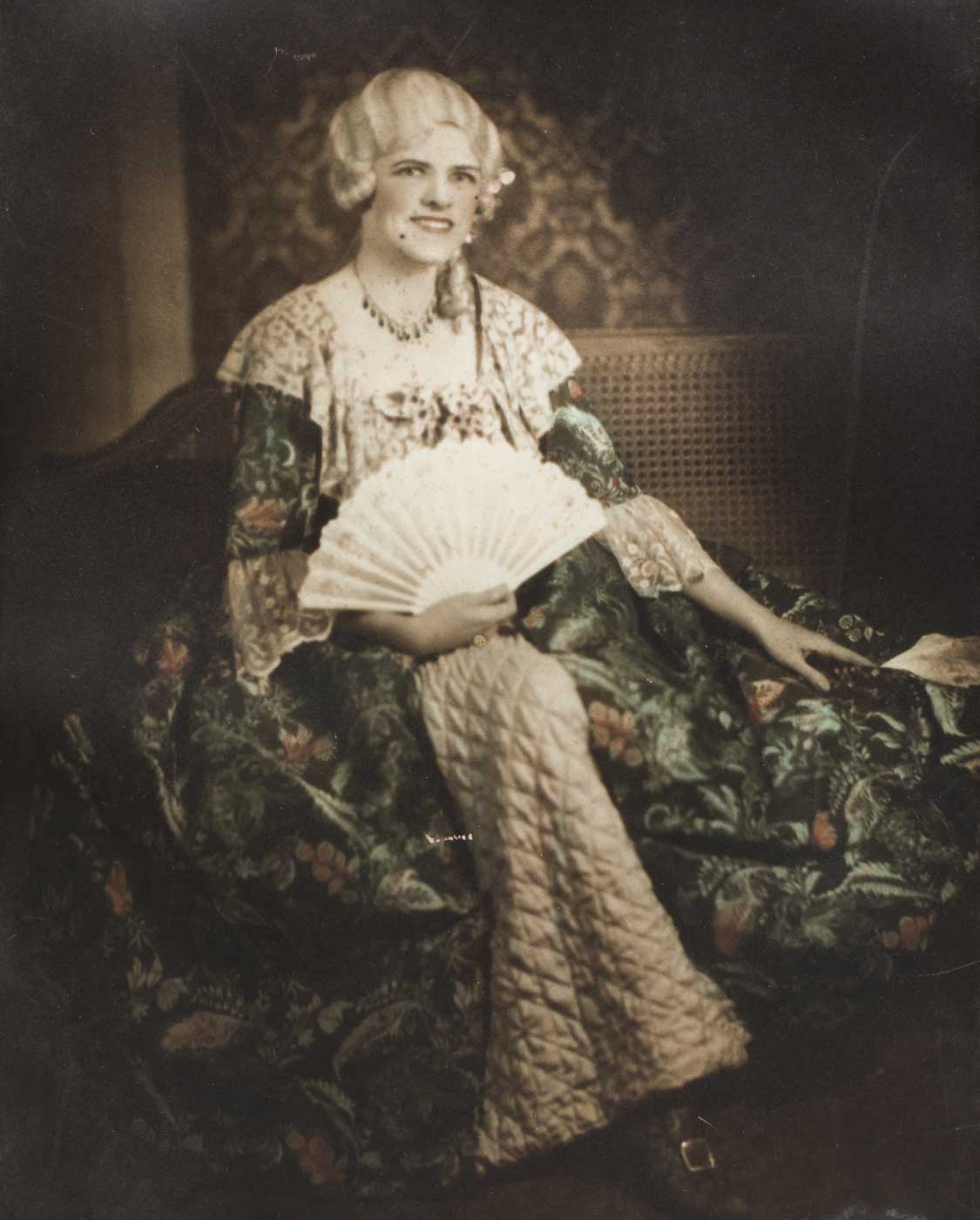
Worn, altered, cherished and preserved by a long line of women, the dress connects stories of London’s silk weaving industry with rural Australia and Sydney’s social scene.
The dress was brought to Australia in 1838 by English migrant Mary Deane, who ran a school for young women in Sydney. Mary married pastoralist William Pitt Faithfull, founder of Springfield sheep station, near Goulburn, New South Wales.
It is likely the dress was originally made for Mary’s great-grandmother in the 1730s or 40s and then altered in the 1770s and again in the 1920s.
It was one of many dresses carefully kept in the family museum at Springfield homestead, coming to life again for parties and dress-ups.
Donations to the Museum’s Annual Appeal allowed curators and conservators to research, conserve and display the dress.
18th century open-front style with fitted bodice
The open-front style of the dress with its fitted bodice and voluminous skirt was typical of the 18th century. Known as a robe à l'anglaise – or ‘English gown’ – this style was renowned for its meticulously fitted bodice. An arrangement of pleats lay flat against the back of the body and ran through the waistline into the skirt, narrowing the overall appearance.
The open skirt would have originally revealed a matching or contrasting petticoat. A set of panniers (a type of side hoop) beneath the skirt would have created width and achieved the ideal silhouette for the time.
Striking floral fabric
The green and floral silk brocade of this dress is beautiful and also helps identify when and where the fabric was made. It features large, bold, scrolling floral and leaf designs popular in the first half of the 18th century, particularly in England.
Spitalfields on the outskirts of London was the silk manufacturing centre of England. It was home to skilled designers including Anna Maria Garthwaite – one of few female designers in the industry at the time.
Garthwaite was prolific, creating thousands of designs inspired by botanical specimens. The design of the Museum’s dress is strikingly similar to her work and it is possible the Deane family purchased the silk that was hand woven by a weaver working with Garthwaite’s designs.
Treasured family heirloom
When Mary Faithfull and her family arrived in Sydney in 1838, the dress would not have been part of Mary’s everyday wardrobe but treasured as a family heirloom.
It is likely it was worn by Mary’s grandmother or great-grandmother – or even both – and then passed down through generations of women in the Deane and Faithfull family.
The dress was modified several times during the 18th century. This was a common practice for a garment made from such valuable fabric, and entirely appropriate as fashions changed relatively slowly up until the final decades of the century.
Two buttons at the back of the bodice and a remnant of textile cord inside the skirt indicate the dress was converted to a robe à la polonaise, a style popular during the 1770s.
The overskirt part of the dress would have been pulled up and ties attached to the buttons, creating gathered volume at the hips and rear of the dress and revealing more of the petticoat beneath.
It is possible the original owner continued to wear the updated style several decades later. Or perhaps she passed it down to her daughter who would have worn it when visiting acquaintances or attending an afternoon tea.
20th century fancy-dress alterations
In 1929, almost 200 years after it was made, the dress was worn again by Mary’s granddaughter, Clarice Anderson-Faithfull.
Clarice attended a Country Women’s Association fancy-dress fundraising ball in Sydney. The dress carries evidence of Clarice’s night out, adding more layers of information to this story.
Changes were made – rather hastily it seems – to fit Clarice’s measurements. The size and length of the dress were reduced with alterations to side seams, the bodice and skirt front. Lace was added to the neckline and sleeves and a set of metal hip panniers were stitched to the waist to add volume and shape to the skirt, mimicking the original 18th century style.
Clarice was one of several young women, well-known among Sydney society, who dressed in the gowns of their ancestors for the fundraising ball.
Held at the Ambassadors in Sydney, young women from the country and city were presented as part of a series of ‘living pictures’. The Sydney Morning Herald reported ‘Miss Clarice Faithfull Anderson was a Lady of the 18th Century’. Read the full Sydney Morning Herald report of the ball.
Caring for the dress
The Museum’s skilled textile conservators repaired and stabilised the dress. It is being transformed from a textile carefully housed in collection storage to a striking and evocative display.
The dress’s silhouette showcases its original early 18th century fashion features as well as the centuries of use and modification that enrich its social history.
Conservators and curators opted for displaying the popular 1770s robe à la polonaise style to show off more of the replica petticoat – and did so with a range of coloured silk. Louis-heeled replica shoes were silk dyed to match the dress and teamed with green and gold clocked stockings – a flashy feature of 18th century fashion.
Part of the Springfield–Faithfull Family collection, the dress was donated to the Museum in 2005 by Pamela Maple-Brown and the late Jim Maple-Brown, and the late Diana Boyd, through the Australian Government’s Cultural Gifts Program.
In our collection
